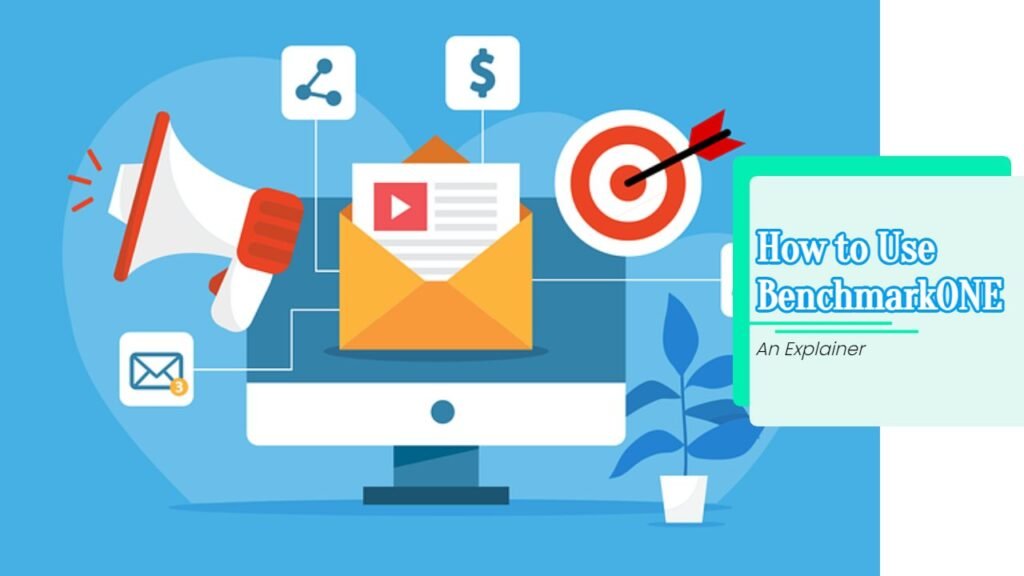Evolution of Marketing Tactics
Understanding the evolution of marketing tactics is crucial for developing effective strategies in today’s competitive landscape. This evolution can be categorized into three primary phases: the Industrial Revolution impact, the Sales Era strategies, and the Modern Marketing Era.
Industrial Revolution Impact
The Industrial Revolution, which spanned from the 1860s to the 1920s, marked a significant turning point in marketing practices. The advent of new technologies enabled mass production for the first time, allowing businesses to reach a wider audience while reducing prices. This evolution laid the foundation for modern mass-marketing techniques. Companies began to understand the power of reaching consumers on a large scale, leading to practices that we still recognize today.
| Key Developments | Description |
|---|---|
| Mass Production | Enabled by new technologies, allowing businesses to create products at scale. |
| Wider Audience Reach | Marketing tactics began targeting a broader demographic. |
| Price Reduction | Increased competition led to lower prices for consumers. |
For further insights into traditional marketing methods that emerged from this era, check out our article on traditional marketing methods.
Sales Era Strategies
Transitioning into the Sales Era, from 1920s to 1940s, businesses concentrated on selling as many units as possible. Companies employed eye-catching sales promotions, radio commercials, and door-to-door sales tactics to entice customers. A notable example is Proctor and Gamble, which skillfully utilized radio broadcasts to communicate with its target audience during the Great Depression (CoSchedule).
| Tactics Employed | Description |
|---|---|
| Sales Promotions | Incentives designed to boost short-term sales. |
| Radio Commercials | Engaged audiences in their homes, providing brands with direct access. |
| Door-To-Door Sales | Personal interaction used to effectively pitch products. |
To explore traditional sales strategies, refer to our article on traditional sales strategies.
Modern Marketing Era
Beginning in the 1990s, the marketing landscape further evolved into what is now referred to as the Modern Marketing Era. This era emphasizes the importance of understanding target customers’ needs and customizing marketing activities to meet those needs. Companies that adopted this customer-centric approach achieved better results and enhanced customer loyalty. For example, brands like Apple differentiated themselves by offering superior customer experiences, which contributed to capturing significant market share (CoSchedule).
| Characteristics | Description |
|---|---|
| Customer-Centric | Focus on understanding and addressing customer needs. |
| Customized Marketing | Tailored marketing strategies for specific audience segments. |
| Enhanced Customer Experiences | Improvement of overall customer benefits and satisfaction. |
For insights into traditional marketing strategies employed in this era, you might find our article on traditional marketing strategies helpful.
Understanding these phases will better equip you to implement effective traditional marketing tactics in your own business.
Transition to Digital Marketing
The marketing landscape has undergone a significant transformation with the emergence of digital marketing. This transition has fundamentally changed how businesses interact with consumers and what strategies they employ.
Milestones in Digital Marketing
The evolution of digital marketing can be marked by several key milestones. The widespread adoption of personal computers allowed marketers to explore new advertising avenues. Nearly half of the world’s population is now online, providing vast opportunities for engagement. The advent of smartphones further revolutionized consumer behavior, as they enabled immediate access to information and shopping capabilities. In particular, social media platforms like Facebook, Twitter, and Instagram have transformed how you can connect with your audience by offering cost-effective advertising solutions and the ability to precisely target specific segments of consumers CoSchedule.
| Year | Milestone |
|---|---|
| 1990s | Introduction of personal computers |
| 2000s | Rise of social media platforms |
| 2005-2010 | Rapid adoption of smartphones |
| 2020 | Almost 50% of global population online |
Impact of Social Media
Social media has redefined communication between brands and consumers. These platforms enable two-way conversations, allowing you to listen actively to customer feedback and engage in real-time. The decrease in traditional advertising costs on these platforms has encouraged more brands to invest in digital marketing tactics. As a result, many businesses have shifted their focus from merely promoting products to fostering community and building relationships with consumers. This shift is vital in creating a loyal customer base and optimizing traditional marketing methods for the digital age.
Rise of Inbound Marketing
Inbound marketing has emerged as a powerful strategy in the new digital marketing framework, emphasizing the attraction of customers through relevant and informative content. Instead of pushing advertisements, this approach draws customers in by providing meaningful, valuable content that meets their needs. Investments in inbound marketing have proven fruitful, with expectations for the SEO market to grow from $41.97 billion in 2021 to $51.25 billion in 2022 CoSchedule. This shift highlights the need for businesses to adapt their tactics to align with consumer expectations, making a compelling case for integrating various traditional marketing strategies into your overall marketing plan.
As the digital marketing landscape continues to evolve, blending traditional and modern techniques may enhance your overall effectiveness in reaching your desired audience.
Basics of Marketing Strategy
Understanding the fundamentals of a marketing strategy is essential for any business looking to implement effective traditional marketing tactics. This section explores value propositions, competitive advantages, and market research as foundational elements of a successful marketing strategy.
Value Proposition
A value proposition is the cornerstone of your marketing strategy. It communicates to consumers what your company stands for, how it operates, and why it deserves their business. Developing a clear value proposition helps you differentiate your offerings in a competitive market. It is crucial for instilling brand loyalty and driving customer engagement.
Key Attributes of a Strong Value Proposition:
| Attribute | Description |
|---|---|
| Clarity | Clearly articulates the benefits and features of the product or service. |
| Relevance | Addresses the specific needs and preferences of the target audience. |
| Differentiation | Sets the brand apart from competitors by highlighting unique aspects. |
For further insights on creating effective propositions, explore our section on traditional marketing strategies.
Competitive Advantage
Achieving a competitive advantage involves understanding the needs and wants of customers while providing superior value compared to rival companies. Your marketing strategy should clearly define how you will overtake competitors by leveraging your strengths, be it through pricing, quality, customer service, or innovation.
Methods for Establishing Competitive Advantage:
| Method | Description |
|---|---|
| Product Differentiation | Offering unique features or superior quality to distinguish your products. |
| Cost Leadership | Providing products at a lower price than competitors while maintaining quality. |
| Niche Targeting | Focusing on specific market segments that are underserved by competitors. |
For more information on maintaining a competitive edge, check out our resource on traditional marketing techniques.
Market Research
Market research is an indispensable element that informs your marketing strategy. It involves systematically gathering, analyzing, and interpreting information about your market, consumers, and competitors. Effective market research can aid in identifying customer behavior, preferences, and trends, allowing you to make informed decisions.
Types of Market Research:
| Type | Description |
|---|---|
| Primary Research | Collecting data directly from consumers through surveys, interviews, or focus groups. |
| Secondary Research | Analyzing existing data from reports, studies, and market analysis to glean insights. |
To explore various methodologies for conducting effective research, visit our discussion on traditional marketing research methods.
By establishing a robust foundation through these basic elements of marketing strategy, you can enhance your efforts in executing traditional marketing campaigns and achieving your business objectives.
Elements of Marketing Strategy
A successful marketing strategy requires careful planning and execution. It is essential to identify specific goals, develop customer profiles, craft compelling messages, and effectively allocate budgets and channels.
Identifying Goals
When establishing a marketing strategy, the first step is to clearly define your goals. These goals should align with your overall business objectives and provide a roadmap for the direction of your marketing efforts. Your goals might include increasing brand awareness, generating leads, or driving sales. By setting measurable benchmarks, you can evaluate the success of your strategies over time.
Customer Profiles
Understanding your target audience is critical in any marketing initiative. Developing detailed customer profiles helps to ensure that your marketing strategies resonate with the consumers who are most likely to engage with your brand. Consider factors such as demographics, preferences, and behaviors to create comprehensive buyer personas. Conducting effective traditional marketing research methods can provide valuable insights into what is important to these consumers and how your products or services can meet their needs.
| Customer Profile Element | Description |
|---|---|
| Demographics | Age, gender, income, education level |
| Psychographics | Interests, values, lifestyle, behavior patterns |
| Pain Points | Challenges or problems the audience faces |
| Purchase Motivation | Reasons for choosing your product or service |
Message Crafting
Once you clearly understand your audience, the next step is to craft messages that resonate with them. A well-articulated message should address the needs and concerns of your customers, highlighting the unique advantages of your offerings. Utilize the insights gained from customer profiles and market research to create compelling content that engages your target audience. A strong message serves to differentiate your brand from competitors and enhances your overall marketing effectiveness.
Budgeting and Channels
Allocating your marketing budget wisely is crucial for maximizing the impact of your marketing tactics. Determine how much you are willing to invest in various aspects of your strategy, including traditional channels such as print media and direct mail, as well as digital initiatives. Evaluate the potential return on investment (ROI) for each channel to prioritize your spending accordingly. Selecting the right traditional marketing channels will help you reach your target audience effectively and efficiently.
Creating a balanced approach between traditional and digital efforts may enhance overall outcomes and expand your reach. By integrating tactics and continuously refining your strategies, you can foster long-term success in your marketing endeavors.
For more insights on traditional marketing tactics, refer to our comprehensive guides on traditional marketing methods and traditional marketing examples.
Traditional Marketing Tactics
Implementing effective marketing strategies is crucial for business growth. Among various strategies, traditional marketing tactics can play a significant role in creating brand awareness and fostering customer loyalty. This section will discuss four key traditional marketing tactics: free gifts strategy, user-generated content, social media participation, and referral programs.
Free Gifts Strategy
The free gifts strategy is a powerful traditional marketing tactic that leverages the psychological concept of reciprocity. By offering complimentary items with a purchase, businesses can encourage customers to form positive relationships with their brand. For instance, SourceBMX provides free stickers with orders, appealing to cyclists who seek to personalize their bikes. This approach not only enhances customer satisfaction but also drives loyalty and encourages advocacy (Semrush).
| Free Gifts Example | Target Audience | Expected Outcome |
|---|---|---|
| SourceBMX Stickers | Cyclists | Increased customer loyalty and brand advocacy |
User-Generated Content
User-generated content (UGC) is an effective marketing approach that relies on content created by customers rather than brands. UGC fosters authenticity and trust, as potential customers often trust peer recommendations over brand messaging. Additionally, it can be a low-cost strategy to enhance visibility and engagement. Brands can incorporate UGC by encouraging customers to share photos or testimonials, showcasing their experiences with the product or service (Semrush).
| User-Generated Content Elements | Benefits |
|---|---|
| Customer testimonials | Increased trust and authenticity |
| Social media posts | Enhanced visibility and engagement |
| Hashtag campaigns | Amplified brand reach |
Social Media Participation
Social media participation encompasses engaging customers in trending topics, challenges, or campaigns on social media platforms. This strategy can attract younger audiences and exhibit a brand’s personality. By participating in viral trends or challenges, brands increase their visibility and encourage audience interaction, which can lead to enhanced brand awareness and customer identification (Semrush).
| Social Media Activities | Target Audience | Benefits |
|---|---|---|
| Viral dance challenges | Younger demographics | Increased brand awareness and engagement |
| Trend-specific content | Broader audience reach | Enhanced customer identification with brand |
Referral Programs
Referral programs are a classic marketing tactic that generates sales by encouraging existing customers to promote a business. When customers share their positive experiences, it builds trust and enhances brand visibility. Offering incentives, such as discounts or rewards, can further motivate customers to refer others. An example of success in this area is Branch Basics, which effectively leveraged referral incentives to boost its customer base (Semrush).
| Referral Program Elements | Target Audience | Expected Results |
|---|---|---|
| Customer referral incentives | Existing customers | Increased trust and brand awareness |
| Discount offers | New customers | Enhanced customer acquisition |
These traditional marketing tactics, when aligned with your overarching marketing strategy, can significantly enhance customer engagement and brand loyalty. For more information on broader marketing strategies, refer to our page on traditional marketing strategies. Each tactic provides unique benefits and should be tailored to fit your specific business needs.
Marketing Channel Selection
Choosing the right marketing channels is crucial when implementing traditional marketing tactics for your business. Each channel offers unique benefits and can significantly impact your overall marketing strategy. Below are four key marketing channels to consider: print media, TV and radio, direct mail, and billboards.
Print Media
Print media includes newspapers, magazines, brochures, and flyers. These forms of marketing provide a tangible representation of your brand and can reach specific demographics effectively. Print ads can be strategically placed in publications that your target market reads, increasing the likelihood of engagement.
| Type of Print Media | Benefits |
|---|---|
| Newspapers | Local reach; timely updates |
| Magazines | Targeted niches; longer shelf life |
| Brochures | Detailed information; easy distribution |
| Flyers | Cost-effective; high visibility |
However, it is essential to tailor your message and visuals in print media to resonate with your audience. Utilizing effective design and clear calls to action can enhance the effectiveness of your print campaigns.
TV and Radio
Television and radio remain powerful traditional marketing channels. These media allow you to reach a broad audience quickly, making them particularly effective for brand awareness campaigns. With the ability to convey emotion through visuals and audio, TV and radio can create memorable advertising experiences.
| Medium | Advantages |
|---|---|
| Television | High engagement; visual storytelling; vast audience reach |
| Radio | Local targeting; cost-effective; less competition for attention |
Commercial spots and informative segments can be designed to capture the audience’s interest while promoting your products or services. Given their broad reach, make sure your advertisements are clear and compelling to maximize impact.
Direct Mail
Direct mail involves sending physical promotional materials to a targeted audience. While traditional in nature, it is crucial to note that studies indicate over 40% of direct mail never gets opened (Milia Marketing). Therefore, crafting attention-grabbing mail pieces is essential.
| Type of Direct Mail | Key Considerations |
|---|---|
| Postcards | Simple and eye-catching |
| Catalogs | Detailed product showcases |
| Letters | Personalized messaging |
To improve response rates, consider segmenting your audience and tailoring the content to the needs and preferences of each group. A well-planned direct mail campaign can provide excellent return on investment if executed correctly.
Billboards
Billboards provide a dynamic platform for advertising, especially in high-traffic areas. Their visual impact, along with the ability to reach large audiences quickly, makes them an effective choice for brand recognition.
| Billboard Format | Strengths |
|---|---|
| Traditional Billboards | Large reach; static messaging; cost-effective |
| Digital Billboards | Dynamic content changes; real-time updates; higher engagement |
While simplicity in design is crucial for billboard ads, it’s essential to ensure that your message is concise and easy to understand at a glance. Tailor your billboard placements to areas where your target market frequents for maximum effectiveness.
Incorporating a blend of these channels can enhance your overall marketing efforts. Consider reviewing additional information on traditional marketing examples and types of traditional marketing to gain deeper insights.
Incorporating Digital Marketing
Integrating digital marketing with traditional marketing tactics can enhance your overall strategy. This section will focus on several key methods, including paid marketing tactics, owned marketing actions, co-branding partnerships, and referral programs.
Paid Marketing Tactics
Paid marketing tactics involve purchasing brand or content placement across various platforms, such as publications, websites, search engines, and social networks. For instance, Teachable effectively utilizes Facebook ads to reach a larger audience (CoSchedule). This tactic facilitates targeted outreach to specific demographics, allowing for higher engagement and return on investment (ROI).
| Platform | Example of Usage |
|---|---|
| Publications | Sponsored articles or ads in industry magazines |
| Websites | Banner ads on relevant websites |
| Search Engines | Pay-per-click advertising on Google |
| Social Networks | Sponsored posts on platforms like Instagram and LinkedIn |
Owned Marketing Actions
Owned marketing actions are tactics that you control, reducing reliance on external sources for content creation and customer engagement (CoSchedule). These tactics include creating a blog, managing social media profiles, and developing email newsletters. With owned marketing, you can directly communicate with your audience and build brand loyalty.
| Type of Owned Marketing | Description |
|---|---|
| Blogs | Long-form content that addresses customer pain points and showcases expertise |
| Social Media | Engaging profiles that provide updates, promotions, and interact with customers |
| Email Newsletters | Regular updates sent to subscribers that promote products or services |
Co-Branding Partnerships
Co-branding involves collaborating with another business or brand to create products, services, or content that targets similar audiences (CoSchedule). This strategy can bring mutual benefits, expanding each brand’s reach while sharing resources. Examples include joint promotions and co-hosted events.
| Co-Branding Example | Description |
|---|---|
| Joint Promotions | Brands running a sale together, offering exclusive deals |
| Collaborative Content | Producing web seminars or joint publications that highlight both brands |
Referral Programs
Referral marketing involves incentivizing existing customers to share positive experiences about your brand, product, or service with others (CoSchedule). This earned marketing tactic can significantly expand your reach without heavy expenditure. For example, BarkBox offers incentives for customers to refer friends via social media platforms like Facebook. Effective referral programs can foster community support and lead to increased customer acquisition.
| Referral Program Characteristics | Impact |
|---|---|
| Customer Incentives | Encourages sharing experiences leading to increased engagement |
| Positive Brand Sentiment | Customers become brand advocates, enhancing trust |
Incorporating these digital marketing tactics into your overall strategy allows for modern adaptations of traditional marketing tactics. By effectively blending both approaches, you can ensure your marketing efforts resonate with a broader audience while maximizing conversion opportunities.
Strategic Marketing Execution
In executing your strategic marketing plan, it is vital to focus on key components such as Conversion Rate Optimization, aligning tactics with your overarching strategy, tracking success metrics, and integrating essential tools like Mediatool.
Conversion Rate Optimization
Conversion Rate Optimization (CRO) is a technique designed to enhance your website’s effectiveness by increasing the number of visitors who complete a desired action, such as making a purchase or signing up for a newsletter (CoSchedule). This involves analyzing visitor behavior, conducting A/B testing, and making informed adjustments to improve user experience.
A simple overview of CRO components is shown below:
| Component | Description |
|---|---|
| A/B Testing | Testing variations of web pages to determine which performs better |
| User Feedback | Collecting insights from users about their experience |
| Call-to-Action Optimization | Enhancing links and buttons to encourage engagement |
Implementing effective CRO strategies can lead to significant improvements in conversion rates and overall marketing effectiveness.
Aligning Tactics with Strategy
Your marketing strategy, tactics, and goals are intricately connected. For successful outcomes, they must complement one another. It is crucial to establish your strategy first, then identify the tactics necessary to implement it effectively (Mediatool). This alignment ensures that each tactic contributes meaningfully toward achieving your business objectives.
| Strategy Element | Action Required |
|---|---|
| Strategy | Define overarching goals and objectives |
| Tactics | Select methods that align with the strategy |
| Goals | Set measurable outcomes for evaluation |
Tracking Success Metrics
Monitoring the effectiveness of your tactics in relation to your overall marketing strategy can be intricate. Establishing clear success metrics is essential. By utilizing a centralized platform such as Mediatool, you can efficiently monitor the development and efficacy of your marketing campaigns in a streamlined manner (Mediatool). Key metrics to track include:
| Metric | Purpose |
|---|---|
| Conversion Rate | Measures the percentage of conversions |
| ROI | Assesses the overall return on marketing investment |
| Engagement Rate | Evaluates the level of interaction with your content |
Mediatool Integration
Integrating a comprehensive tool like Mediatool allows you to consolidate all your marketing efforts into a singular platform. This not only simplifies tracking and reporting but also enhances collaboration among team members. A centralized system can facilitate the alignment of metrics with your strategy and help identify areas for improvement (Mediatool).
| Integration Benefits | Details |
|---|---|
| Centralized Tracking | Real-time updates on marketing performance |
| Enhanced Collaboration | Streamlined communication across teams |
| Comprehensive Reporting | In-depth analyses of marketing outcomes |
By addressing these essential components of strategic marketing execution, you can strengthen your approach to traditional marketing tactics and ensure that your efforts yield measurable results. For more insights on traditional marketing approaches, consider exploring our articles on traditional marketing methods and traditional marketing examples.





















